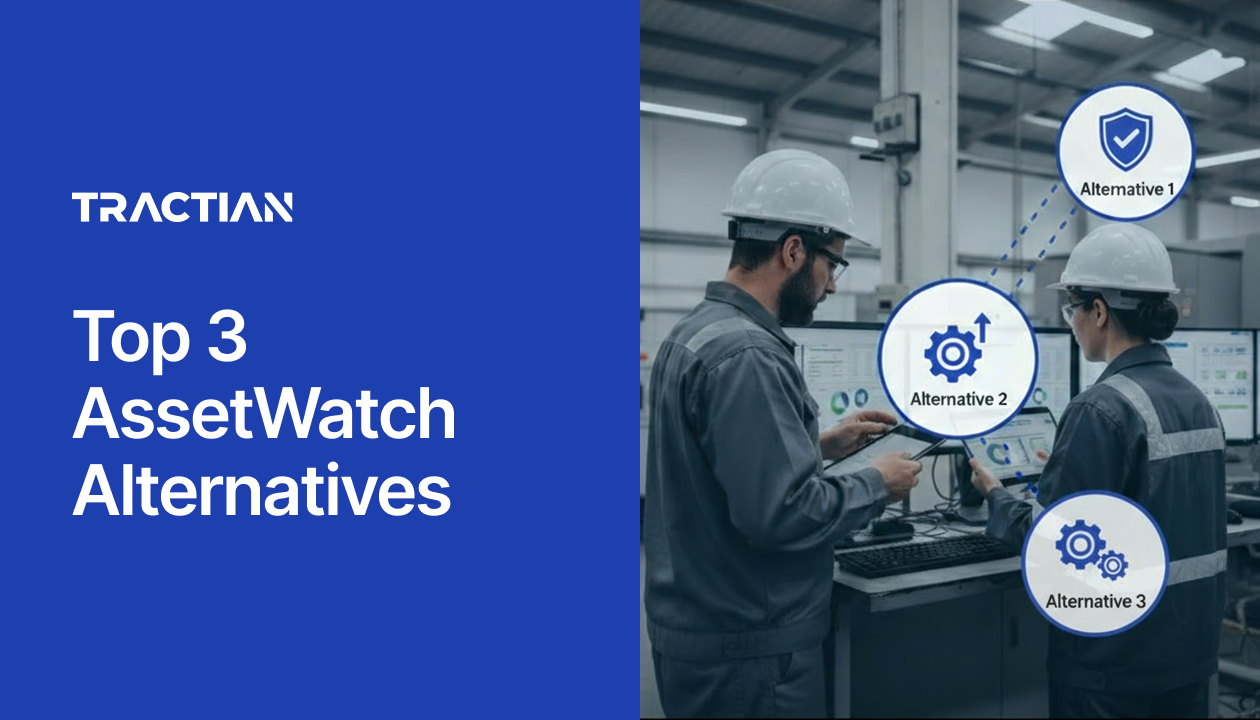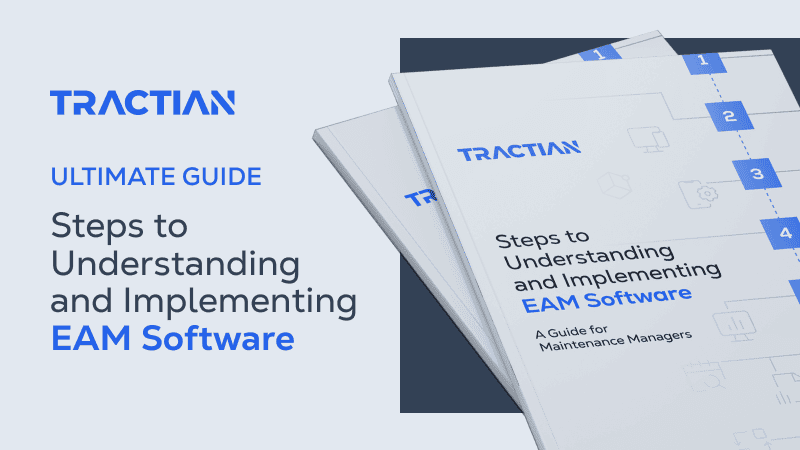AssetWatch provides an end-to-end monitoring service combining Vero® tri-axial vibration and temperature sensors with AI-powered analytics and dedicated human expertise. This is a critical part of any comprehensive, tech-driven condition-based maintenance program.
Operating on a subscription model, they supply wireless sensors with cellular connectivity, cloud-based monitoring software, and assign a certified Category III vibration analyst to each client. The company promises rapid deployment (up to 200 sensors installed in a day) with no capex or IT integration required.
Despite raising $75 million in Series C funding in April 2025, AssetWatch has virtually no public customer reviews on major platforms and maintains opaque pricing that requires sales engagement after a $199 trial period.
However, researching your options and asking the right questions of providers is vital for understanding the relative benefits and drawbacks of any specific platform and facility management solutions. Ultimately, you need to make a selection, and it needs to be the right one.
That’s why we’ve dug in and done some of the hard work for you.
Why Teams Are Exploring AssetWatch Alternatives
While AssetWatch promises comprehensive condition monitoring with dedicated analyst support, maintenance teams increasingly find that the service model creates more dependencies than it solves. The lack of transparent pricing, the absence of verifiable customer success stories, and heavy reliance on external experts for every diagnostic decision have led teams to reconsider their approach to predictive maintenance.
Advanced, digital reliability programs need immediate insights, proven scale, and the flexibility to develop internal capabilities without perpetual vendor dependency. Teams exploring alternatives will express frustrations with the following:
Limited proven track record: With zero publicly accessible customer reviews as of April 2025 on G2, Capterra, Reddit, or any major platform despite operating in one form or another since 2015, AssetWatch lacks established social proof to demonstrate any results that maintenance teams need when investing in critical monitoring infrastructure.
Service dependency over automation: AssetWatch's model relies heavily on external human analysts (CMEs) for all diagnostics and prescriptive guidance, creating ongoing dependency on vendor expertise rather than empowering internal teams with automated insights they can act on immediately.
Pricing transparency concerns: After the $199 trial, AssetWatch provides no public pricing information and requires custom quotes for their "one low monthly subscription," making it impossible for teams to budget accurately or compare costs transparently.
Limited scope beyond vibration and oil: While AssetWatch offers vibration monitoring and oil analysis services, they lack the comprehensive Asset Performance Management capabilities needed for enterprise reliability programs, including FMEA tools, root cause analysis modules, and multi-technique integration.
Scalability questions for growing operations: AssetWatch's model of assigning dedicated human analysts to each account inherently limits scalability, and the complete absence of third-party customer reviews or testimonials on any major platform makes it impossible to verify their claimed enterprise capabilities.
Key Capabilities to Prioritize When Replacing AssetWatch
When evaluating alternatives to AssetWatch, successful teams focus on solutions that deliver immediate value without creating new dependencies. The ideal platform combines autonomous intelligence with comprehensive reliability tools, transparent costs with proven results, and seamless integration with scalable deployment.
Tech-driven condition monitoring should empower your team to act independently while providing expert support when needed, without locking you into perpetual service relationships. These capabilities distinguish truly advanced automated solutions from traditional service models.
- Comprehensive Asset Performance Management: A unified APM platform that consolidates vibration, oil analysis, thermography, and ultrasound data with failure libraries, FMEA tools, and root cause analysis capabilities.
- Automated AI diagnostics with expert backup: Autonomous fault detection covering all major failure modes that deliver immediate insights, with optional expert analysis on demand when needed.
- Native CMMS integration: Seamless workflow from condition monitoring insights to work order execution within a single platform, eliminating integration complexity.
- Predictable pricing: Clear per-sensor or per-user pricing that allows accurate budgeting and TCO calculations without requiring lengthy sales engagements.
- Proven scale and reliability: Established track record with hundreds of customer testimonials, case studies, and quantified ROI metrics from real deployments.
AssetWatch Alternatives at a Glance
| Feature | AssetWatch | Tractian | Emerson | Augury |
|---|---|---|---|---|
| Automated AI Diagnostics | Requires human analyst review for all diagnostics and prescriptive guidance | AI detects all major failure modes automatically with optional expert backup | Basic automated alerts require manual interpretation and configuration | AI-driven diagnostics with high automation with expert support option |
| Asset Performance Management Suite | Limited to vibration and oil analysis without FMEA or RCA tools | Full Reliability Module with FMEA, RCA, and multi-technique integration | APM capabilities through AMS Machine Works at additional cost | Machine health only without comprehensive APM tools |
| Native CMMS Integration | Requires external CMMS for work order management | Fully integrated CMMS with automatic work order generation | Requires separate CMMS or integration with existing systems | No native CMMS requires third-party integration |
| Pricing Transparency | No public pricing after $199 trial requires custom quotes | Subscription-based pricing for monitoring sensors | Custom quotes only with no public pricing available | Per-machine annual pricing requires sales engagement |
| Multi-Technique Data Consolidation | Vibration and oil analysis only without unified platform | Consolidates vibration, oil, thermography, and ultrasound data | Primarily vibration with limited multi-technique integration | Vibration, temperature, and magnetic field sensing only |
The 3 Best AssetWatch Alternatives
Tractian
Best for: Teams that want a sensor-first solution that monitors and diagnoses assets in real time while also connecting seamlessly to a complete maintenance solution natively.
Tractian combines wireless vibration/temperature sensors with a full-featured Condition Monitoring platform and integrated CMMS in one unified solution. Unlike service-dependent models, Tractian AI autonomously detects all major failure modes. The Reliability module consolidates all predictive maintenance techniques, including vibration, oil analysis, thermography, and ultrasound, into a single timeline with comprehensive failure history tracking.
The platform features patented failure detection algorithms trained on over 3.5 billion samples, plus expert analysis on demand through Supervised Analysis when complex cases require specialist interpretation.
With proven results across over 1,500 sites, Tractian offers the industry's most comprehensive reliability solution. The capabilities include failure library modules with FMEA tools, built-in root cause analysis guidance, an AI-assisted asset registry, and criticality-based alert timing that adjusts based on P-F curves. This comprehensive approach means teams get both immediate automated insights and the deeper analytical tools needed for continuous reliability improvement.
Key features
- Industry-leading Vibration Sensor: Vibration sensor built for field reliability, combining AI-driven insights with IP69K durability and ATEX/NFPA certifications, 3,300 ft wireless range, and 3–5-year battery life for dependable performance in any environment.
- Patented AI failure detection with expert backup: Identifies all major failure modes automatically, with optional Supervised Analysis for complex vibration spectrum interpretation.
- Native CMMS with APM integration: Sensor insights automatically trigger work orders while CMMS data informs maintenance strategies and inspection schedules.
- Multi-technique failure history: Consolidates all predictive maintenance data sources into a unified timeline regardless of technique or source.
- Machine Health Monitoring: Customizable machine-health monitoring dashboard that consolidates data from IIoT sensors (vibration, temperature, RPM, energy) into real-time views, automated diagnostics, and alerts.
Why real customers choose Tractian over AssetWatch
- This reviewer says they like “The ease of use and accuracy of the data. Also, the auto-generated alerts mean I don't have to watch it constantly. The customer support has been better than I expected and more helpful. We had a failure, we supplied Tracian with the information, and they replied with their analysis very quickly.” Peter S., Maintenance Manager
- “I like that I can track all of our assets from one location. If a motor is having issues in one part of the plant, and then another on the other side of the plant, I am able to basically troubleshoot both motors in one location.” And, “they even offer a training course to help understand what a lot of the stats and graphs mean.” Nicholas D., Maintenance Lead Supervisor
- This customer appreciates the “ease of tracking equipment without having to constantly observe,” like “tracking motor problems to more accurately predict failure.” Jordan D, Enterprise Maintenance Supervisor
Why companies choose Tractian over AssetWatch
- “There were some issues that I would say, if not for having Tractian, we would have never noticed… For example, a lubrication problem, we could go out and lubricate it and recheck it on Tractian platform and see that it fixed the problem… It was pretty impressive for that, the results we got early on.” Jacob Hoffine, Reliability Engineer at Ingredion
- "We observed many recurring lubrication failure insights. We revised our maintenance plan, and today we no longer have this type of failure. We were able to train the sensor by providing feedback on the insights related to material changeovers." William C., Maintenance Coordinator at ICL
- “For the first time, we can clearly see what’s happening on the floor before a failure hits. That kind of visibility is a game-changer.” Trevor Baker, Sr. Manager, Manufacturing Strategic Initiatives at Great Plains Manufacturing - A Kubota Company
Pro and Cons at a Glance
How much does Tractian cost?
Tractian offers custom, subscription-based pricing for its condition monitoring sensors, with dedicated sales consultations to match each deployment to the customer’s operational needs. Teams can request a quote without a credit card and typically achieve full setup and measurable ROI within just a few months.
Emerson Electric
Best for: Large industrial facilities in the oil & gas, power generation, and heavy manufacturing sectors that require hazardous area-certified monitoring with deep process control integration.
Emerson's AMS Wireless Vibration Monitor represents decades of industrial expertise in a comprehensive asset monitoring ecosystem. The solution uses WirelessHART mesh networking to deliver full-spectrum vibration data, incorporating embedded PeakVue™ technology for early bearing fault detection.
The platform is designed for integration with distributed control systems (DCS) and supervisory control and data acquisition (SCADA) environments, particularly in facilities utilizing Emerson’s Plantweb digital architecture. Deployment generally requires specialized configuration and technical expertise. The hardware is certified for Class 1, Division 1, ATEX, and IECEx Zone 0 environments and has been validated for reliable operation in hazardous and high-demand industrial settings.
Key features
- PeakVue™ technology: Algorithm optimized for early-stage bearing fault identification.
- WirelessHART mesh network: Wireless infrastructure supporting up to 100 devices per gateway.
- Hazardous area certified: Full certifications for explosive environments with IP66 rating and 316 stainless steel construction.
Real Customer Gaps with Emerson
As of October 2025, teams implementing Emerson's AMS Wireless Vibration Monitor likely discover several operational gaps in their condition monitoring deployment.
- Automated diagnostic intelligence: Despite their sensor hardware, Emerson's system provides raw vibration data and basic threshold alerts that require manual spectral analysis and interpretation, leaving teams dependent on internal or external analysts to understand what the data actually means.
- Comprehensive reliability management: While Emerson provides vibration monitoring, teams can't consolidate other predictive maintenance techniques, such as oil analysis, thermography, or ultrasound inspections, into a unified platform, forcing them to manage multiple disconnected systems for complete asset health visibility.
- Self-service deployment: The WirelessHART infrastructure and AMS Machine Works platform require specialized configuration expertise and formal integration projects, preventing maintenance teams from achieving quick wins or scaling incrementally as they prove value.
Pro and Cons at a Glance
How much does Emerson cost?
Emerson’s AMS solution is typically offered through custom enterprise agreements. The model combines hardware components such as sensors, gateways, and supporting infrastructure with software and analytics platforms under a subscription-based licensing model. The AMS Machine Works Connect bundle integrates sensors, edge analytics, cloud services, and deployment support, and is primarily intended for large-scale industrial operations with formal procurement and integration processes.
Augury
Best for: Manufacturing operations seeking comprehensive "Diagnostics as a Service" with guaranteed performance coverage and edge-AI capabilities for both standard and ultra-low RPM equipment.
Augury provides a machine health monitoring platform delivered through a subscription model that removes the need for separate capital budgeting and infrastructure planning. The Halo R4000 sensors combine vibration, temperature, and magnetic field measurements to detect both mechanical and electrical anomalies, offering broader diagnostic coverage than vibration-only systems.
Edge AI processing enables adaptive sampling that automatically aligns with machine operating cycles, which is particularly useful for variable-speed or intermittent equipment.
Augury’s Guaranteed Diagnostics program, supported by HSB (Munich Re), includes financial assurance if the system does not detect covered failures. While the platform has accumulated extensive operating hours across industrial deployments, reliability metrics and detection accuracy are not independently verified, and total program terms are not publicly disclosed.
Key features
- Magnetic field sensing: Detects electrical anomalies and motor current issues alongside mechanical faults.
- Edge-AI smart sampling: On-board processing automatically adjusts sampling rates to match machine operating cycles.
- Guaranteed Diagnostics coverage: Insurance-backed program compensating up to $150,000/machine/year for missed failures.
What real customers say about Augury
- One reviewer writes that “We’ve had a generally positive experience using Augury,” but, “The implementation process was complex and resource-intensive, as we had to coordinate personnel to help with asset inventory, sensor deployment, system calibration, and data collection for baseline well in advance of seeing the benefits of the solution.” And, “We have experienced uneven adoption of the platform by end users - some of our experienced maintenance leads were initially distrustful of the alerts.” Gartner Peer Review
Pro and Cons at a Glance
How much does Augury cost?
Augury operates on a per-machine, per-year subscription basis, with no public pricing. The all-inclusive model includes sensors, software, connectivity, installation, and diagnostic services. Subscription tiers are structured around equipment type, such as critical assets, supporting assets, and ultra-low RPM machinery. The operating expenditure model simplifies deployment by removing capital approval requirements but introduces ongoing budget dependencies and limited cost transparency.
Why Tractian is the Smarter Choice Compared to AssetWatch
While AssetWatch’s approach centers on analyst-led diagnostics that require external review for most asset insights, Tractian equips maintenance teams to act independently with real-time, AI-powered intelligence. The platform automatically detects all major failure modes, delivers plain-language prescriptive guidance, and consolidates multiple predictive maintenance techniques. Expert support is available through Tractian’s Supervised Analysis service when needed, but the system is designed for autonomous operation from day one.
Transparency and validation are other points of contrast. AssetWatch’s pricing details are not readily available online and typically require engagement with a sales team following their $199 trial. Similarly, verified customer feedback is difficult to find through public review platforms, which can make benchmarking and due diligence more challenging.
Tractian, by contrast, provides openly published customer success stories and documented results from more than 1,500 deployments, including verified ROI outcomes across multiple industries. Its native CMMS integration ensures sensor insights flow directly into work orders with diagnosed issues and recommended actions, removing the integration complexity that arises when relying on third-party tools for execution.
Most critically, Tractian delivers what advanced reliability programs actually need:
- Comprehensive reliability capabilities including FMEA tools and root cause analysis modules
- Multi-technique data consolidation across vibration, oil, thermography, and ultrasound
- Automated diagnostics with optional expert support rather than mandatory human review
- Native CMMS integration for friction-free sensor-to-work-order workflows
- Proven scale with verifiable customer success
While AssetWatch keeps you waiting for human analysts to review data and provide guidance, the Tractian platform works 24/7, delivering instant insights that keep operations running. The choice is between perpetual service dependency or genuine operational independence backed by proven technology.
Book a demo and see what your team can achieve with truly autonomous condition monitoring.
FAQs about AssetWatch
- Does AssetWatch provide automated diagnostics without requiring human analyst review?
AssetWatch’s model relies on analyst-led diagnostics, meaning vibration and sensor data are reviewed by certified analysts before customers receive findings or maintenance recommendations. While this approach can add an expert layer of oversight, it also means teams typically wait for human interpretation rather than receiving instant, automated insights. As a result, maintenance decisions may depend on analyst availability, creating potential delays and reliance on external expertise for routine monitoring.
- Does AssetWatch include a native CMMS platform for work order management?
No. AssetWatch focuses solely on condition monitoring services and requires integration with external CMMS platforms for work order creation and management. This creates additional complexity, potential compatibility issues, and separate subscription costs for customers who need to bridge the gap between sensor alerts and maintenance execution, rather than having everything unified in a single platform.
- How can I evaluate the true cost of condition monitoring solutions?
When comparing solutions, look beyond sensor costs to include CMMS licensing, integration fees, and ongoing service dependencies. Solutions range from $35-45 per sensor monthly for platforms with native CMMS included, to $1,000-5,000+ per machine annually for service-heavy models.
Ask whether pricing includes automated diagnostics or requires human analyst fees, whether the CMMS is native or requires a separate purchase, and if there are hidden costs for data storage, user licenses, or expert support that could significantly impact your total cost of ownership. Transparent companies will typically offer a pricing estimator for sensors per asset.
- How quickly can Tractian be deployed and operational?
Tractian's plug-and-play sensors install in under 3 minutes each and begin collecting data immediately using built-in 4G/LTE connectivity that requires no IT infrastructure. Most facilities achieve full operational status within 14 days, including the initial machine learning baseline period.


